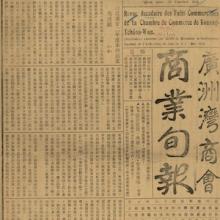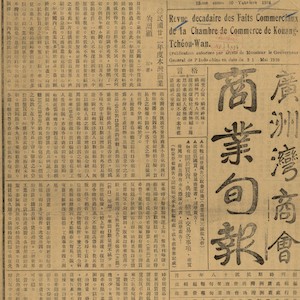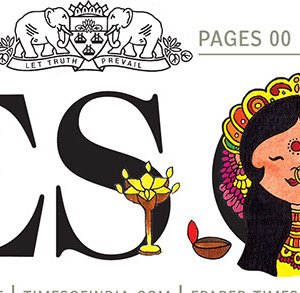Asia
Korean Rare Book Digital Collection
These collection's topics include history, politics, social life and values, education, biology and more from the pre-modern Korean perspective.
Online Museum Educational Resources in Asian Art
The OMuERAA connects with more than one hundred museums, making a rich array of educational materials available to students and instructorsBrumfield Collection
These photographs give something concrete to visualize and contextualize the past as they build their understanding of history.Japanese Censorship Collection
The censorship process is valuable to learn about, as it shows not only what the government valued, but how citizens may have pushed that boundary.
Short Teaching Module: Colonialism and Local Power
Colonialism and imperialism can take many forms, but more often than not these do not entail direct and strict control from a distant imperial metropole.

Hangzhou elites in 1935
The image shows an eclectic group of elites in Hangzhou in 1935, including Shanghainese gangster-businessmen Du Yuesheng and Zhang Xiaolin, Peking Opera star Mei Lanfang, Mayor of Hangzhou Zhou Xiangxian, and Japanese Consul at Hangzhou Yuzo Matsumura.

Chinese Troops during the Xinhai Revolution
Image of Chinese troops dispatched by the Shanghai daotai of the collapsing Qing Dynasty to protect Xujiahui during the Xinhai Revolution.

Chamber of Commerce Newspaper from Guangzhouwan, China
The image is of the front page of a newspaper (商業旬報 Shangye xunbao) published in 1934 by the Chamber of Commerce in Guangzhouwan (廣州灣商會 Guangzhouwan shanghui).

Ainu and Ezochi Rare Collection
In this case, the collection focuses on the expansion of the ethnically Japanese “Wajin” people into the northern islands of present day Japan.
The Times of India Masthead
When approaching newspapers as a source for information, several key questions arise: When and where was the newspaper published? What kind of reader was it intended to reach? Did it have local competitors? What were its political affiliations?